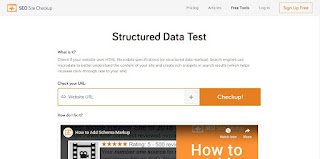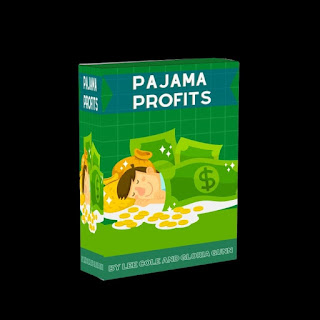Search This Blog
This blog contains 100% free, and reliable affiliate marketing courses.
Featured
- Get link
- X
- Other Apps
What Is Schema Markup? Beginner’s Guide to Structured Data +
What Is Mapping Markup? Amateur's Manual for Organized Information
Just click now
https://www.semrush.com/blog/what-is-schema-beginner-s-guide-to-structured-data/
List of chapters
What Is Pattern?
Kinds of Blueprint Markup
Why Is Blueprint Markup Significant for Website design enhancement?
The most effective method to Produce and Test Your Own Construction for Your HTML
What Is Blueprint?
Blueprint markup (schema.org) is an organized information jargon that assists web crawlers with bettering figure out the data on your site.
At the point when web indexes perceive the significance and connections behind elements, they can serve rich outcomes, or rich pieces.
Like this one:
Composition is a language used to address information — the genuine information is called organized information.
Organized information coordinates your page's substance and makes the data more straightforward for Google to comprehend.
For instance, you can utilize organized information on a birthday cake recipe page to tell Google the cook time, client evaluations, and more like in the picture above.
In this article, we'll cover:
Various kinds of construction markup
Why pattern markup is significant for Website optimization
Step by step instructions to create and test your own mapping
How about we start for certain models.
 |
Just click now
https://www.semrush.com/blog/what-is-schema-beginner-s-guide-to-structured-data/
Sorts of Pattern Markup
Composition markup is code that portrays components on your site into a language that all significant web indexes comprehend. Like that, web indexes can give clients more extravagant outcomes.
A how-to markup, for instance, lets Google know that a particular piece of content is a bit by bit guide. Google can then provide searchers with a review of each step inside the list items page:
Google figures out 32 sorts of pattern. These are:
Article
Book
Breadcrumb
Merry go round
Course
Dataset
Boss Total Rating
Occasion
Reality check
FAQ
Home Exercises
Step by step instructions to
Picture permit
Work posting
Learning video
Math Solvers
Film
Schooling question and answer session
Assessed compensation
Digital broadcast
Practice issues
Back and forth discussion
Recipe
Programming application (Beta)
Speakbable
Membership and paywalled content
Video
The following are five normal instances of outline and what they resemble on the SERP (web search tool results page):
Logo Markup
Logo markup lets Google know your logo. Like that, your right logo will show up in the Google information board each time somebody looks for your organization.
This is what the logo markup resembles in real life:
 |
Neighborhood Business Markup
Neighborhood Business markup brings up which components of your site contain contact data, your location, and other significant business subtleties. Google then shows that data in a Neighborhood Business Board on the right half of specific SERPs.
This markup guarantees that Google gives those searchers the right data and energizes nearby people walking through.
This is what it resembles:
Audit Markup
The survey markup adds a star rating to the base piece of your outcomes page passage. It shows searchers others' thought process of your site or items. This is useful in light of the fact that clients are bound to buy items with audits.
This is what the audit markup resembles in real life:
Sitel ing Markup
Sitelink markup adds extra navigational connections to your posting on the outcomes page. Rather than simply a connection to your landing page, searchers will likewise see connects to your professions tab, blog, and other significant pages.
This is what sitelink markup resembles on the SERP:
Item Markup
Item markup gives Google more data about items recorded on your site so searchers can see more subtleties straightforwardly on the outcomes page.
It likewise provides Google with a picture of your item that can show up in Google Picture Search. Picture look through make up 22.6% of all ventures, so you can pass up a great deal of traffic on the off chance that you overlook it.
This is what item markup resembles in real life:
Google won't show rich outcomes for all pages with organized information.
Nonetheless, adding construction markup to your site will allow you a higher opportunity of obtain a rich outcome which takes up more land on the outcomes page.
For instance, your site could appear all the while as a natural outcome, as a response to a FAQ, and as a video on similar outcomes page.
So there are different opportunities for a client to tap on your site, all from one pursuit.
Why Is Pattern Markup Significant for Website optimization?
The purpose in organizing your information is to discuss better with web search tools. At the point when Google comprehends elements on a more profound level, it serves improved results to searchers.
Things like rich cards, rich pieces, and the information board show up on SERPs in the wake of social affair data from organized information.
While there's no proof that that construction will work on your rankings, it gives an abundance of chances.
For instance, an item without sitelinks doesn't give searchers considerably more than the title and meta portrayal of the connected page:
Then again, an item with sitelinks gives searchers the vitally connected page alongside comparable site pages that could intrigue them more:
In the event that the client wasn't captivated to click by the title tag, there are as yet a couple of additional opportunities to pull them in with sitelinks.
A few patterns carry on like computerized boards, as well. Walmart takes up the whole toward the top piece of the SERP in view of the multitude of rich scraps it has:
Concentrates on demonstrate the way that the better land from rich outcomes can further develop active clicking factor.
Truth be told, clients click on rich outcomes 58% of the time versus 41% of the ideal opportunity for non-rich outcomes.
Google has likewise expressed that appropriately organized information can work on the general appearance of query items (which gives a superior client experience).
For instance, with organized audits, Google can show recipes with the most five-star evaluations at the highest point of their outcomes.
Or on the other hand, with organized information on melodies and collections, Google can show what tunes a craftsman sings as a progression of rich cards.
So while there's no hard proof that organized information really influences rankings, it incomprehensibly further develops the hunt insight. Clients can understand FAQs, see evaluations, learn significant business data, and more while never visiting a page.
This can grow your image reach and, as referenced, possibly increment navigate rates.
Step by step instructions to Create and Test Your Own Pattern for Your HTML
There are three dialects of code that you can add to your HTML to tell web crawlers what precisely is on your page: JSON-LD, microdata, and RDFa.
JSON-LD (Javascript Article Documentation for Connected Items)
JSON-LD is a content added as an information block, separate from the remainder of a page's code. Google suggests utilizing JSON-LD "whenever the situation allows" on the grounds that JSON-LD information blocks are simpler to coordinate and change or alter, when important.
This is what it resembles:
In this model, the site page code, <p> I am Kelly </p>, is totally different from the JSON-LD script beneath it.
Microdata
Microdata basically does likewise as JSON-LD yet is organized in an unexpected way. The code should be implanted into a site page's HTML, and that implies it's less novice cordial to compose and refresh.
It's additionally more hard to use at scale for bigger sites (like web based business locales).
Here is an illustration of microdata in real life:
RDFa (Asset Engaging Structure in Traits)
RDFa is like microdata in that you add it to your page's code through HTML labels and properties. Nonetheless, it's a piece more established and more mind boggling.
The advantage is that it very well may be more straightforward to incorporate it with other applications or stages that additionally use it.
By and by, it seems to be this:
 |
Produce Composition Markup for Website optimization
Google's Organized Information Markup Aide makes it simple to create composition. This is the way to utilize it:
Stage 1: Select an Information Type
Pick one of the normal information types from the given rundown. For this model, we picked "Articles."
Stage 2: Glue Your URL
Glue the URL of the page you need to add markup to. You likewise have the choice to glue the HTML. Then, at that point, click "Begin Labeling."
The device will stack your page so you can fire stamping it up. Your site page will show up on the left side and the information things will show up on the right. Like this:
Stage 3: Begin Increasing Your Page
To start, feature the determination on the passed on you might want to increase. For an article, you can feature the writer and pick the "Writer" information thing from the menu that springs up.
The apparatus will take the creator's name and spot it close to "Creator" on the right-hand side.
You can likewise label things that can't be tracked down on your page. On the right half of your page, look down until you see the "Add missing labels" button.
Click on the button to open a spring up menu where you can physically add labels. For instance, we physically added information to the URL tag.
interface 🔗
https://www.semrush.com/blog/what-is-pattern amateur s-manual for organized information/
Leave a comment
Name
Website
Relative story
https://www.semrush.com/blog/zero-clicks-study/
https://www.semrush.com/blog/google-my-business/
Pajama Profits!
Pyjama Profit : The Millennial's Guide to a Sustainable Freelance Career
Soft cover. Condition: New. 1st Edition. Pyjama Profit is a guide for millennials to get started with a self-sustained online freelance practice, while developing their skills needed to succeed. The book talks about in-demand online skills and the different paths one can take to become an expert in these fields. A stable income from freelancing in college was the bedrock that had allowed the authors to explore their ambitions further and get to where they are today. In the process,...
 |
link 🔗
https://ezprofitsoftware.com/pajama-profits-2/
- Get link
- X
- Other Apps
Popular Posts
- Get link
- X
- Other Apps
- Get link
- X
- Other Apps



Comments
Post a Comment